Machinery and technology is often seen as the answer to reducing labour requirements on Irish farms. However, for sheep farmers, the most effective thing for making life easier is having a well-trained sheepdog.
When a new pup arrives on a farm, it is important that the handler gets into the correct mindset before any of the training process begins.
If the dog does not do what you want, avoid thinking that the dog is “stupid” or is “trying to defy you”. In most cases, the dog is probably just confused and is not sure what to do.
It is your job as the handler to make the learning process as easy as possible for the young dog.
For example, it is up to the handler to control the movement of the sheep in the early stages of training so that the dog will naturally go where you want.
Before a pup is introduced to sheep though, it needs to learn its name. This should preferably be a short word that can be said quickly.
The pup should not be taken to sheep until it is big enough and fast enough to pass them.
If it is too young and is just chasing after the sheep without turning them, then it becomes a game of chase for the pup which will hinder training later on.
It is also important to remember that a sheepdog is not a pet. When the pup is young, it is OK to play with it as this can help it get used to its surroundings.
However, when training with sheep begins properly, the dog’s focus should be on sheep. For me, this means the dog is not playing with toys, going on walks with non-working dogs, or let roam free to chase cars or livestock.
Also, try to avoid over-training a dog before it is introduced to sheep. If too much emphasis is put into training a young dog to heel or lie down when commanded, it can lead to the dog becoming too focused on the handler and not the sheep.
Introducing a young dog to sheep
Although every pup is different, it is often suggested that around eight to 12 months of age is an ideal time to properly start training a dog with sheep.
The main aim at the first stage is to get the dog to control the sheep by holding them in one spot with the handler on the opposite side. For the dog, this is teamwork and is the start of the special relationship between shepherd and sheepdog.
To achieve this first step, some handlers put six or so sheep in a pen in the middle of a field. The handler then positions themselves outside the pen with the dog also outside on the opposite side of the sheep. The sheep are held in balance, and everything is kept as calm as possible.
This can also be done without a pen, although it requires the handler to do a lot more running as they need to quickly get round to the opposite side of the sheep and help get everything under control.
Once the pup can hold the sheep in a controlled manner, you can start forcing a change of direction by moving around towards the dog. This will make the sheep move to one side and the dog should move round the sheep to re-gain balance. When this is happening, you can start teaching flank commands.
As the diagram shows, move anti-clockwise around the sheep to encourage the dog to move to its right and say the command “away” when the dog moves.
Move in the opposite direction and say “come by” to teach the dog to move to its left. When the dog regains control of the sheep each time and settles, gently say “lie down” to start teaching it the command to stop.
After that, when the sheep are held in balance, start to walk backwards and the sheep should move towards you.
When the dog gets up to follow the sheep, say “walk on” and this teaches the dog how to bring the sheep towards you, known as fetching.
As training progresses, you should be gradually able to send the dog on longer outruns but start small at less than 10m. Do this by making the dog lie down, position yourself between the sheep and the dog, then give a flank command.

Holding the sheep in balance is teamwork between shepherd and sheepdog. \ Farmers Marts Ltd
Do not let the dog move between you and the sheep when it is flanking. A dog should only do this when it is at a very advanced stage and is learning to move the sheep away from you, known as driving. When it eventually comes to this stage in the training process, walk alongside the sheep with the dog beside you. You can call the dog back to stop it passing the sheep or use a long rope to keep it nearby.
Shedding is usually the last stage, and like driving, it should not be rushed.
To shed, make the dog lie down on the opposite side of the sheep, then create a gap and call the dog towards you.
Machinery and technology is often seen as the answer to reducing labour requirements on Irish farms. However, for sheep farmers, the most effective thing for making life easier is having a well-trained sheepdog.
When a new pup arrives on a farm, it is important that the handler gets into the correct mindset before any of the training process begins.
If the dog does not do what you want, avoid thinking that the dog is “stupid” or is “trying to defy you”. In most cases, the dog is probably just confused and is not sure what to do.
It is your job as the handler to make the learning process as easy as possible for the young dog.
For example, it is up to the handler to control the movement of the sheep in the early stages of training so that the dog will naturally go where you want.
Before a pup is introduced to sheep though, it needs to learn its name. This should preferably be a short word that can be said quickly.
The pup should not be taken to sheep until it is big enough and fast enough to pass them.
If it is too young and is just chasing after the sheep without turning them, then it becomes a game of chase for the pup which will hinder training later on.
It is also important to remember that a sheepdog is not a pet. When the pup is young, it is OK to play with it as this can help it get used to its surroundings.
However, when training with sheep begins properly, the dog’s focus should be on sheep. For me, this means the dog is not playing with toys, going on walks with non-working dogs, or let roam free to chase cars or livestock.
Also, try to avoid over-training a dog before it is introduced to sheep. If too much emphasis is put into training a young dog to heel or lie down when commanded, it can lead to the dog becoming too focused on the handler and not the sheep.
Introducing a young dog to sheep
Although every pup is different, it is often suggested that around eight to 12 months of age is an ideal time to properly start training a dog with sheep.
The main aim at the first stage is to get the dog to control the sheep by holding them in one spot with the handler on the opposite side. For the dog, this is teamwork and is the start of the special relationship between shepherd and sheepdog.
To achieve this first step, some handlers put six or so sheep in a pen in the middle of a field. The handler then positions themselves outside the pen with the dog also outside on the opposite side of the sheep. The sheep are held in balance, and everything is kept as calm as possible.
This can also be done without a pen, although it requires the handler to do a lot more running as they need to quickly get round to the opposite side of the sheep and help get everything under control.
Once the pup can hold the sheep in a controlled manner, you can start forcing a change of direction by moving around towards the dog. This will make the sheep move to one side and the dog should move round the sheep to re-gain balance. When this is happening, you can start teaching flank commands.
As the diagram shows, move anti-clockwise around the sheep to encourage the dog to move to its right and say the command “away” when the dog moves.
Move in the opposite direction and say “come by” to teach the dog to move to its left. When the dog regains control of the sheep each time and settles, gently say “lie down” to start teaching it the command to stop.
After that, when the sheep are held in balance, start to walk backwards and the sheep should move towards you.
When the dog gets up to follow the sheep, say “walk on” and this teaches the dog how to bring the sheep towards you, known as fetching.
As training progresses, you should be gradually able to send the dog on longer outruns but start small at less than 10m. Do this by making the dog lie down, position yourself between the sheep and the dog, then give a flank command.

Holding the sheep in balance is teamwork between shepherd and sheepdog. \ Farmers Marts Ltd
Do not let the dog move between you and the sheep when it is flanking. A dog should only do this when it is at a very advanced stage and is learning to move the sheep away from you, known as driving. When it eventually comes to this stage in the training process, walk alongside the sheep with the dog beside you. You can call the dog back to stop it passing the sheep or use a long rope to keep it nearby.
Shedding is usually the last stage, and like driving, it should not be rushed.
To shed, make the dog lie down on the opposite side of the sheep, then create a gap and call the dog towards you.





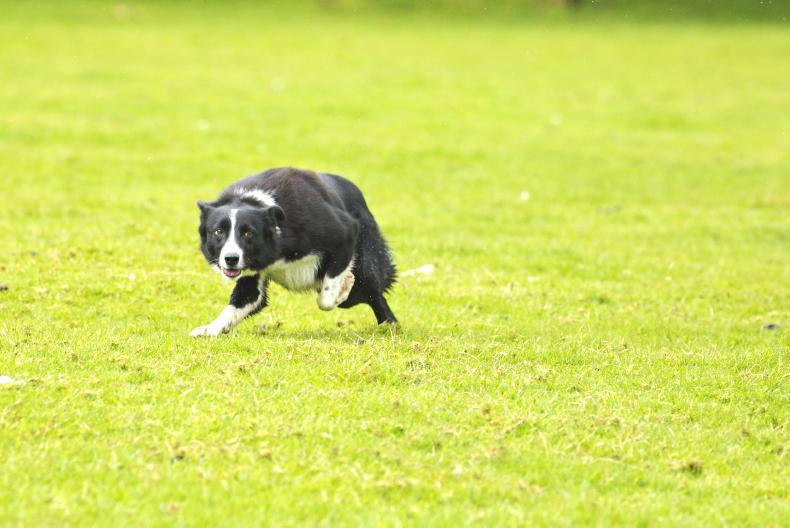
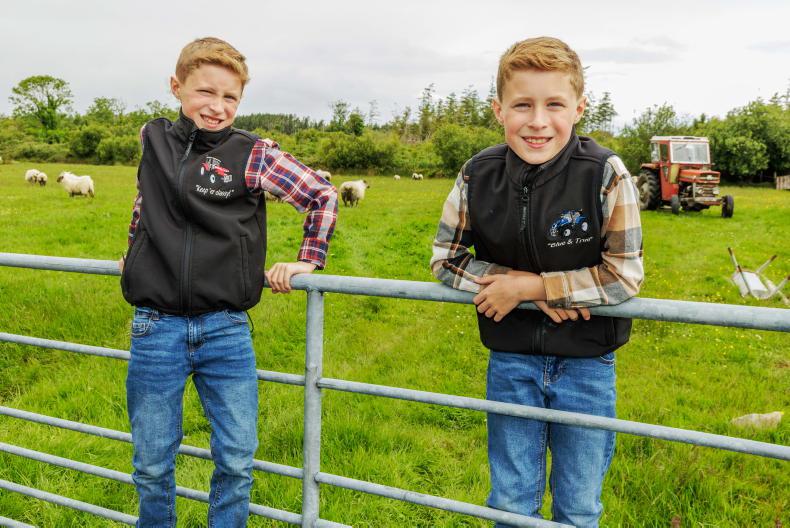
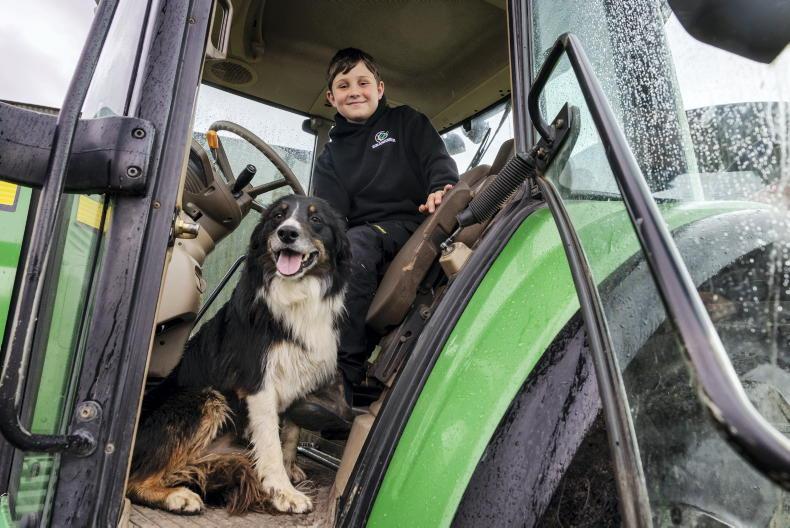
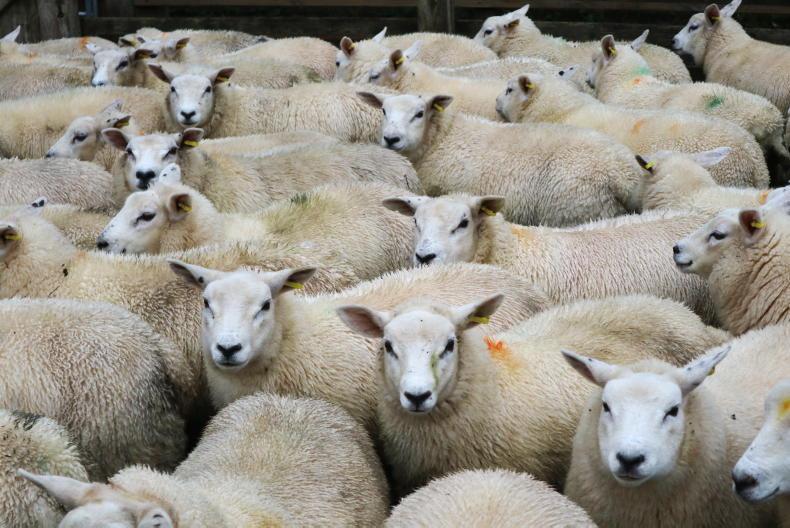
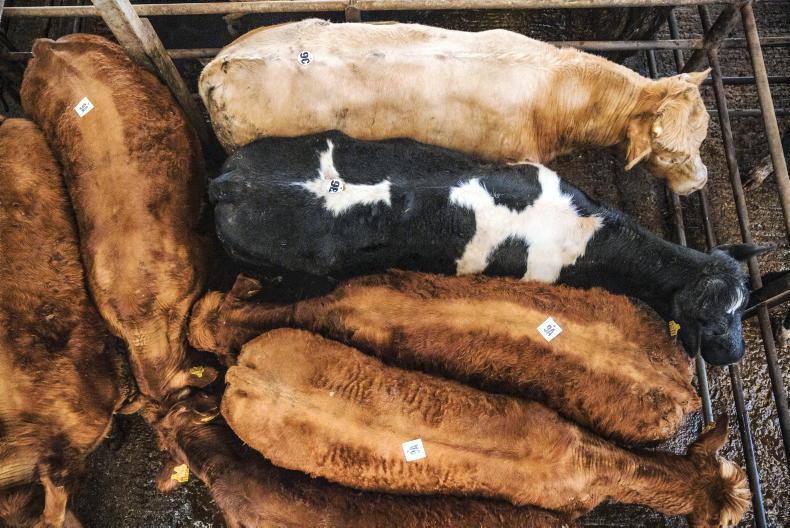
SHARING OPTIONS